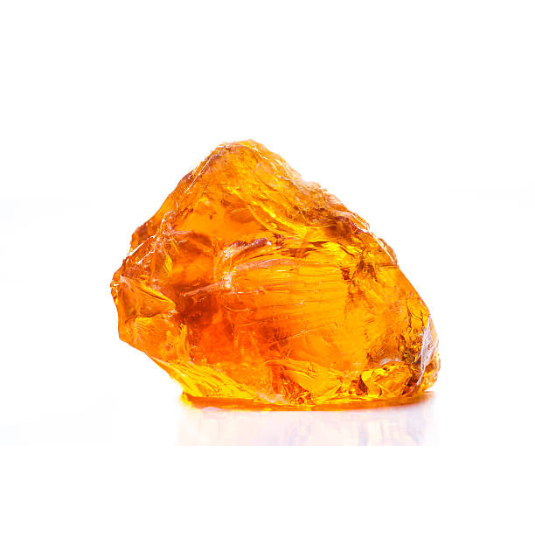What does the word tuberose mean?
Tuberose (Polianthes tuberosa) is a flowering plant native to Mexico, belonging to the Agavaceae family. Its name "tuberose" comes from the Latin "tuberosa," meaning "tuberous" or "tube-shaped." This refers to the plant's fleshy roots, which develop into underground tubers, thus giving the flower its name. Although the tuberose is often called a flower, it is actually the flower stalk that bears the flowers, while the true flowers are small and are found at the top of this stalk.
In the beginning…
Tuberose is native to Mexico, where it was known and used by the Aztecs long before the arrival of Europeans. The Aztecs cultivated this precious flower in their gardens and used its flowers to make scented necklaces and crowns for their rituals and celebrations. The Spanish later discovered this flower upon arriving in Mexico in the 16th century and brought it back to Europe, where it quickly gained popularity.
Over time, tuberose has become an iconic flower in the world of perfumery. Its captivating and sensual scent has captivated perfumers, who have incorporated it into numerous fragrance compositions. Thanks to its intensity, tuberose is often used as a heart or base note in perfumes, bringing a sensual and captivating floral touch. Furthermore, its nocturnal and mysterious character has made it a popular flower for fragrances intended for special occasions and elegant evenings.
Tuberose cultivation
Growing tuberose is a delicate art that requires care and attention. Although native to Mexico , it is now grown in many warm regions of the world, including India, Hawaii, China, and parts of Africa and South America.
Planting tuberose usually begins in early spring, when the tubers are buried in well-drained soil rich in organic matter. The tubers are energy reserves for the plant and allow it to survive periods of dormancy or drought. Once planted, they begin to develop fleshy roots and green stems that will develop into beautiful flowers.
Tuberose thrives in warm, sunny climates, but it is also sensitive to frost. It requires plenty of water during its growing season, but proper drainage is essential to avoid excess moisture, which can lead to root rot. During the growing season, the plant should be regularly fed with balanced fertilizers to promote its growth.
Tuberose typically blooms in summer. The white, waxy, star-shaped flowers emit a powerful, sweet fragrance that is often described as captivating and sensual. Farmers must be patient as flowering can take a few months, but the rewards are well worth it.
Tuberose flowers are harvested by hand because they are fragile and must be treated with care to preserve their olfactory qualities. Once picked, the flowers are often used immediately in perfumery, as they quickly lose their fragrance after harvest. Tuberose is a precious plant, and its cultivation requires special expertise, but the result is a unique olfactory essence that continues to captivate perfume lovers around the world.
What did you know about the use of tuberose in perfumery?
The olfactory profile of tuberose is captivating and complex, making it a key note in many perfume compositions. Its sweet, narcotic fragrance evokes floral and animal nuances, with creamy, milky accents. Tuberose exudes intense floral scents, reminiscent of jasmine and gardenia, but it is also combined with green and spicy notes that give it a richer, more intriguing dimension.
In perfumery, tuberose is often used as a heart note, bringing warmth and sensuality to fragrances. It pairs particularly well with other floral ingredients, such as rose, jasmine, and ylang-ylang, creating intoxicating floral bouquets. Perfumers also pair it with fruity notes like peach or apricot, which amplify its sweetness and sensuality.
Tuberose is also appreciated for its ability to blend harmoniously with gourmand notes such as vanilla, honey, or caramel, adding a sensual and sweet touch to perfumes. On the other hand, it can be combined with spicy notes such as ginger, cinnamon, or pepper, for a more exotic and captivating blend.
Tuberose-based perfumes are often described as luxurious and sophisticated, ideal for special occasions and elegant evenings. Its powerful sillage and exceptional longevity make it a sought-after note in niche and high-end fragrances. Whether as the main protagonist or in harmony with other ingredients, tuberose continues to dazzle and seduce, establishing its timeless place in the art of perfumery.
Good to know!
Aside from its perfumery qualities, tuberose is a precious plant with soothing and relaxing properties. Used in aromatherapy, its captivating scent is associated with reducing stress, anxiety, and insomnia, creating a calm and relaxing atmosphere. Studies have revealed beneficial compounds such as antioxidants and anti-inflammatory molecules, which may protect cells from free radicals and reduce inflammation in the body. Furthermore, in some cultures, tuberose is considered an aphrodisiac, strengthening emotional bonds between individuals thanks to its intoxicating and sensual scent.
Our favorite tuberose perfumes
Here is a list of popular perfumes that feature tuberose in their composition:
• Fracas by Robert Piguet : Launched in 1948, Fracas is an eau de toilette emblematic of tuberose, celebrating its opulent and captivating side. This timeless classic is a rich and sensual floral bouquet.
• Carnal Flower by Frederic Malle : Created by the famous perfumer Dominique Ropion, this eau de parfum highlights tuberose in a modern and bold way, with floral and green accents.
• Tubéreuse Criminelle by Serge Lutens : This creation by Serge Lutens plays on contrasts by combining tuberose with cold, minty notes, creating a surprising and intriguing fragrance.
• Moon Bloom by Hiram Green : This natural and plant-based eau de parfum highlights tuberose in all its splendor, with exotic and sweet nuances.
• Tuberose by Histoires de Parfums : This bold interpretation of tuberose combines the flower with animal notes, evoking a wild and intoxicating sensuality.
• Poison by Dior : The fragrance belongs to the oriental fragrance family, which is often rich, opulent, and sensual. It opens with top notes that include plum, coriander, wild berries, anise, and Brazilian rosewood. The middle notes consist of rose, tuberose, jasmine, honey, cinnamon, opopanax, frankincense, Damask rose, white narcissus, and labdanum. The base notes are amber, musk, vanilla, vetiver, heliotrope, and sandalwood.
• My Way by Giorgio Armani : A modern floral fragrance that opens with luminous top notes of Calabrian orange and bergamot. Elegant heart notes of tuberose and jasmine sambac offer an enchanting aura, while warm base notes of Virginia cedar and Madagascar vanilla leave a refined and sensual trail.
• Tubereuse Indiana by Creed : This eau de parfum from Maison Creed is a tribute to tuberose with a refined and luminous floral composition.
Who knows, maybe one day Bon Parfumeur, our 100% made in France perfume house, will offer perfumes with tuberose... In the meantime, don't hesitate to visit our website or come and meet us in store!










